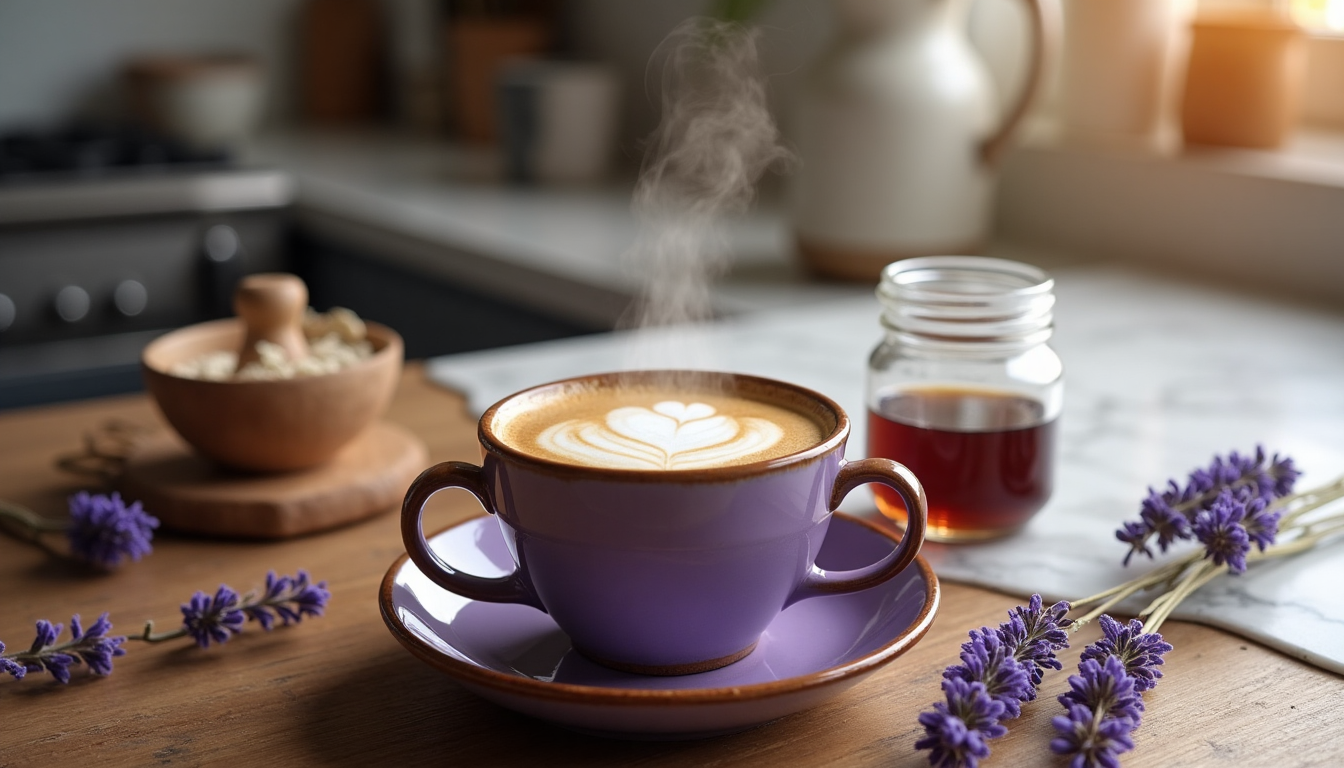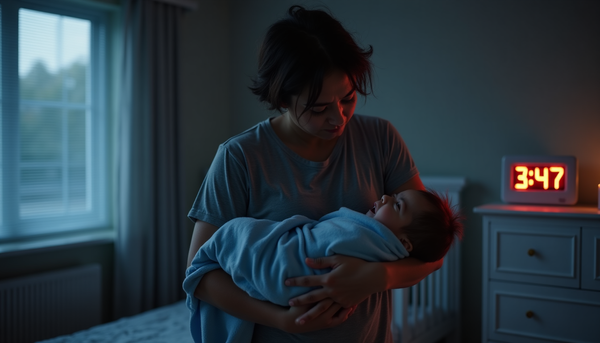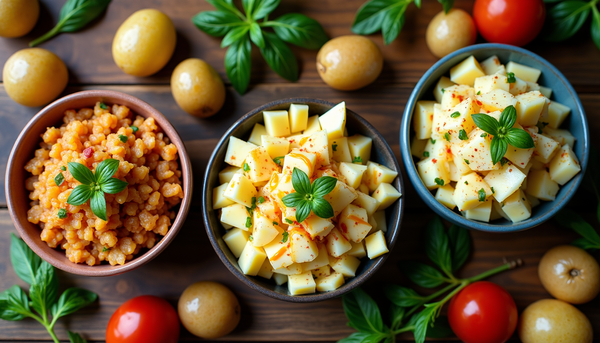Why I Stopped Buying $6 Lattes (And Started Making Something Better)

The $2,000 Wake-Up Call
Last month, I did something that made my stomach drop. I calculated how much I spent on coffee shop drinks in 2023.
$2,136.
For someone who preaches intentional spending and mindful consumption, this felt like a slap in the face. But here's the thing—it wasn't really about the money. It was about what I'd been buying without even realizing it.
I wasn't just purchasing caffeine or even convenience. I was buying a daily dose of someone else's creativity, served in a disposable cup, consumed while scrolling through emails. How had my morning ritual become so... transactional?
The Lavender Revelation
The shift started, oddly enough, with a drink I almost didn't order. My friend Sarah dragged me to this tiny coffee shop in her neighborhood—you know the type, where the barista has intricate tattoos and the menu is written in chalk. She insisted I try their lavender latte.
"Lavender? In coffee?" I was skeptical. It sounded like something you'd find at a spa, not in my morning routine.
But that first sip? Complete game-changer.
The floral notes didn't overpower the espresso—they danced around it. There was something almost meditative about the flavor, like it forced you to slow down and actually taste what you were drinking. For the first time in months, I put down my phone and just... sat with my coffee.
That drink cost $6.25. And in that moment, I realized I'd been paying premium prices for mediocre experiences everywhere else.
The Psychology of Expensive Habits
Here's what nobody tells you about coffee shop dependency: it's not really about the coffee. It's about the ritual, the brief moment of luxury, the feeling that you're treating yourself well.
But when did "treating ourselves" become synonymous with spending money?
I started thinking about this from my old consulting days. We used to call it "purchased convenience"—outsourcing tasks that could add genuine value to our lives. Making coffee at home isn't just about saving money; it's about reclaiming a daily practice that could actually enhance your morning instead of just fueling it.
So I decided to experiment. What if I could recreate that lavender latte experience at home? Not just the taste, but the mindfulness that came with it?
The Art of Homemade Magic
Turns out, making a lavender latte isn't rocket science. But it is a kind of alchemy.
The foundation is surprisingly simple: espresso, lavender syrup, and milk. But here's where it gets interesting—every element becomes a choice, a small act of intention.
The Lavender Syrup Journey
First, I had to learn about lavender. Not all varieties are safe to consume (who knew?), so you need culinary-grade dried lavender. I found mine at a local herb shop, where the owner spent twenty minutes telling me about different varieties and their flavor profiles. When was the last time a barista did that?
Making the syrup became my Sunday evening ritual. Equal parts water and sugar, simmered with a tablespoon of dried lavender. The smell alone transforms your kitchen into something magical. And here's the beautiful part—one batch lasts about two weeks, enough for 20+ lattes.
The Espresso Experiment
I'll be honest: I went down a rabbit hole with espresso. Turns out, not all coffee beans play nicely with lavender. The floral notes work best with lighter roasts—something fruity or bright that won't bulldoze over those delicate lavender vibes.
I started with a basic espresso machine (nothing fancy, maybe $150), but you can absolutely use strongly brewed coffee if you're not ready to invest. The perfectionist in me wanted to nail the exact coffee-shop experience, but the realist in me learned that "good enough" often is.
The Milk Situation
This is where personal preference takes over completely. I've tried everything—oat milk for creaminess, almond milk for lightness, regular dairy for that classic latte texture. Each creates a different experience. Oat milk has become my go-to, but I keep experimenting.
The key is temperature. Between 150-160°F if you're being precise (I bought a little thermometer), but really you just want it hot without being scalding. There's something therapeutic about standing at the stove, watching the milk heat up, instead of rushing to grab a to-go cup between meetings.
The Unexpected Benefits
Three months into my DIY lavender latte journey, I've noticed changes I didn't expect:
My mornings are calmer. Making the latte forces me to start my day with intention instead of urgency. I can't multitask while steaming milk—it requires presence.
I taste everything differently. When you make something from scratch, you notice every element. The espresso quality, the lavender intensity, the milk texture. I've become accidentally sophisticated about coffee.
My kitchen feels more alive. There's something about having quality ingredients around—good coffee beans, that jar of lavender syrup, different types of milk. It makes cooking at home feel more legitimate, more creative.
The economics actually work out. Each homemade latte costs me roughly $1.20 vs. $6+ at shops. But beyond the money, I'm investing in a skill, in quality ingredients, in a daily practice that adds value instead of just consuming it.
The Variations That Keep It Interesting
Once you nail the basic recipe, the creative possibilities are endless. I've experimented with:
- Vanilla lavender (just a splash of vanilla extract)
- Honey lavender (swapping honey for sugar in the syrup)
- Iced versions for summer mornings
- Rose lavender for when I'm feeling fancy
My latest obsession is a lavender matcha latte—replacing espresso with matcha powder. It sounds weird, tastes incredible, and definitely can't be found at your average coffee shop.
The Bigger Picture
But here's what really strikes me about this whole experience: it's not about lavender lattes specifically. It's about questioning our default behaviors around convenience and luxury.
How many things do we outsource that could actually enrich our lives if we brought them back home? What daily purchases have we normalized that disconnect us from the actual experience we're seeking?
Making my own lattes has become a gateway drug to other DIY experiments. I'm making my own condiments now (seriously, homemade mayo is a revelation), baking bread on weekends, growing herbs on my windowsill.
It's not about becoming completely self-sufficient or rejecting all convenience. It's about being intentional about what we outsource and what we keep.
Your Own Experiments
I'm curious about your relationship with daily purchases. What's that one thing you buy regularly without thinking about it? Your morning coffee, lunch salads, evening wine, weekend brunch?
What would happen if you picked one thing to try making at home for a month?
Maybe it's lavender lattes. Maybe it's something completely different. But I'd bet money that whatever you choose, you'll discover something unexpected about the process, about your preferences, about what you actually value in that daily ritual.
The Basic Recipe (Because You Asked)
Since I've convinced you to try this (right?), here's my current formula:
- 2 shots espresso (or ¼ cup strong coffee)
- 1-2 teaspoons lavender syrup (adjust to taste)
- 1 cup milk of choice
- Ice for iced version
For hot: steam milk, mix espresso and syrup in mug, pour frothed milk in center For iced: mix milk and syrup in glass, add ice, pour espresso over top
The lavender syrup: 1 cup water + 1 cup sugar + 1 tablespoon culinary-grade dried lavender. Simmer 10 minutes, strain, store in fridge.
Start with less lavender than you think you need. You can always make it stronger next batch.
The Real Question
So here's what I keep coming back to: when did we start believing that the best experiences had to be purchased rather than created?
My $6 lavender latte taught me that sometimes the most revolutionary act is making something beautiful at home, slowly, with attention. Not because it's cheaper (though it is), but because it's ours.
What are you going to make yours?
What's your relationship with daily convenience purchases? Have you had success bringing any store-bought favorites into your home kitchen? I'd love to hear about your experiments in the comments—both the successes and the beautiful failures.




